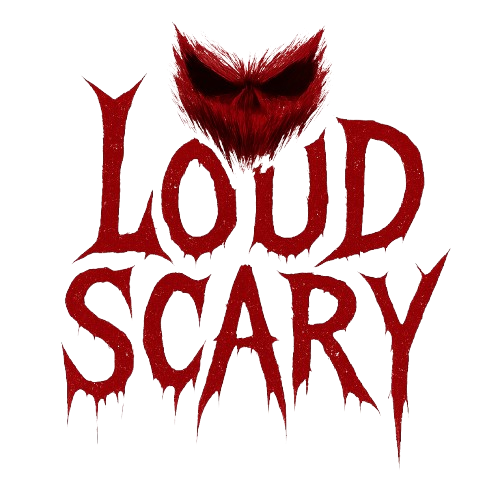Why We Love Spooky Stories The Psychology of Fear Explained
 |
| Spooky Stories The Psychology |
Fear has always been with us. It hides in ordinary places behind a half‑closed door, in the stairwell that feels too quiet, in that faint creak when the house settles at night. Oddly enough, we chase it. We welcome it in through movies, books, and stories whispered when the lights are low. But why? Why do we lean toward fear rather than run from it?
Spooky stories aren’t just entertainment. They’re practice. They’re our way of testing ourselves against dread and realizing, at least for a moment, that we survived.
The Pull of Fear in Everyday Places
We don’t need monsters in caves or beasts in the forest anymore. What truly gets under our skin are familiar things made strange. That flicker in the hallway light. The knock you almost didn’t hear. A window unlocked when you’re sure, absolutely sure, you locked it. This is the genius of
spooky stories: they take our safe spaces and quietly twist them out of shape. Psychologists call it hypervigilance when your body tunes into every detail, waiting for something to go wrong. Stories magnify this effect until a squeaky floorboard sounds like a threat. And your body responds as if it really were one, pumping adrenaline and dopamine, mixing terror with the odd thrill that keeps us hooked.
Why Do We Seek Out Scary Stories?
On the surface, it makes no sense. Fear is supposed to be a survival signal run, hide, protect yourself. Yet people pay money for horror movies and spend sleepless nights finishing creepy novels. Science offers a few explanations:
- Practice runs. When we experience fear in a story, our brain lights up the same way it would if we were really in danger. It’s like running drills for survival.
- Emotional release. After the shock fades and we realize we’re safe, there’s a rush of relief. The fear empties out, leaving something close to satisfaction.
- Stronger bonds. Sharing a scary story ties us together. Back in the past, it was cave fires and warnings about predators. Today, it’s movie nights and late-night podcasts.
In a way,
spooky stories give us a kind of rebirth. We “die” inside them, just a little, but when it’s over, we laugh nervously, and we live again.
How Fear Builds in Stories
A well-told scary story works almost like clockwork, even though it feels chaotic when you’re inside it. First comes
anticipation that heavy pause before anything happens. A stretch of silence that feels wrong. Then
suspicion seeps in. Something isn’t right. You can’t prove it, but you sense it. Shadows lean too far. The air hums too steady. After that,
rupture the sudden jolt. A slam, a scream, or maybe the worst: nothing at all. The air just empties, and the fear spikes so fast you barely understand it. Finally, the
aftermath the shivers, the unease, the way your body takes too long to calm down. And this part clings. It makes you glance back over your shoulder, still hearing echoes of the story long after it’s done.
The Brain When We’re Scared
Everything starts in the amygdala, the brain’s fear center. It dials up your heart rate, pushes stress hormones into your bloodstream, and sharpens every sense.
Spooky stories hijack that system in clever ways:
- A jump scare feels like an attack out of nowhere.
- A slow burn of unease mimics being stalked by something you can’t quite see.
- A shocking twist hits like betrayal a primal fear, deep and ancient.
The best part? We control the switch. Open the book, close the book. Start the movie, hit pause. We decide when to step in and when to step out of danger. And knowing we can walk away makes us braver about stepping in.
Fear Across Generations and Cultures
Spooky stories never really go away. They just change to fit the times.
- For our ancestors, ghosts and demons warned about sin.
- In the 20th century, horror monsters carried the weight of nuclear fear, plagues, and war.
- Now, our stories circle around surveillance, isolation, strangers on the internet the new shadows we huddle against.
Each era invents monsters designed for its own dread. And every generation still leans closer, ready to be scared all over again.
Why the Fear Stays With Us
The scary story doesn’t disappear when it ends. Think about the last one that rattled you. Maybe it was a strange sound in the dark or a voice calling when nobody was supposed to be home. Hours later, the details stuck. That’s how memory works with fear psychologists say we’re wired to remember it better than almost anything else. Survival depends on it. And that’s why creepy tales live on in our heads longer than we’d like. They plant a seed of doubt: Was that just the wind? Did I really shut that door? Fear teaches us to stay alert, to survive even when the lesson arrives wrapped inside fiction.
Key Takeaways
Spooky stories endure because they trick our brains in safe, satisfying ways. They sharpen our instincts, let us experiment with survival, and let us bond with others when we share them. The psychology of fear explains our strange attraction: we keep reaching for horror because it makes us feel alive.
- They let us rehearse danger safely.
- They give us a rush of survival and relief.
- They connect us through shared fear.
Closing Thought
So why do we keep turning back to scary stories? Because they’re invitations. We turn down the lights, shut the doors, and accept them warmly, as if we want them to frighten us. Maybe because we do. Fear sharpens us. It shows us how vulnerable we are, and makes us grateful when we’re still standing on the other side of the story. And still, again and again, we open the next door and step inside.


.png)